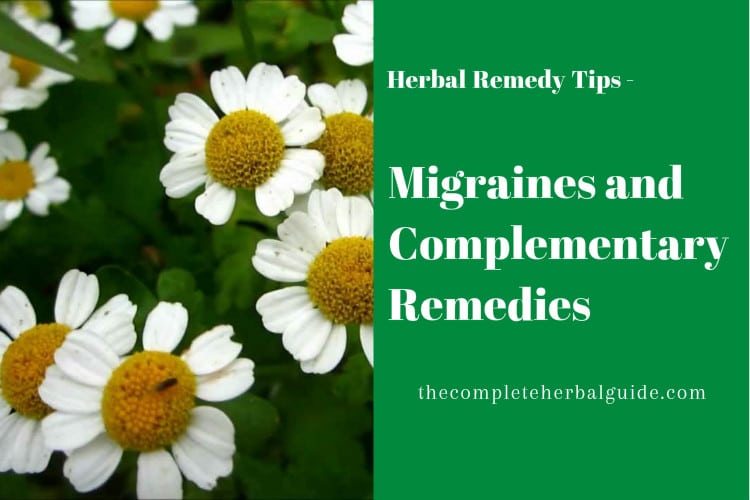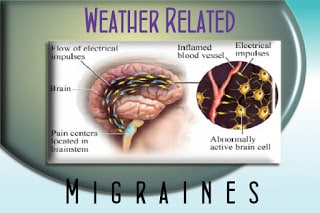
Preventing Weather-Related Migraines

June is Migraine Awareness Month, and many people with migraines say that weather changes trigger headaches—especially extreme heat.
“Migraine is a prime example of a neurologic condition with environmental triggers,” says Orrin Devinsky, M.D., a neurologist at New York University and a Fellow of the American Academy of Neurology. “Foods are often considered the main trigger, but weather may be an underappreciated factor. For many people with migraine, recognizing their own triggers—such as food or sleep deprivation—can be one of the most effective forms of prevention,” he says.
According to a recent survey by the National Headache Foundation, specific weather triggers may include:
- Temperature changes
- High humidity
- High winds
- Stormy weather
- Extremely dry conditions
- Bright lights and sun glare
- Barometric pressure changes
Some experts suggest that people with frequent headaches, including migraine, have a lower threshold for pain or are more sensitive to changes in the environment, including weather.
On the other hand, several objective studies (in which the patient is unaware of changes in barometric pressure) do not show a consistent association between weather changes and migraines.
(For a balanced review of the topic, see “Migraine and the environment,” Headache 2009 Jun; 49(6): 941–52;
Table of Contents
KEEP A MIGRAINE DIARY
If you feel that the weather might be one of your migraine triggers, what can you do? The first step is to keep a migraine diary. Share this information with your neurologist. Below are several factors to include in your diary each time you experience a migraine:
- The date and time. When did the migraine begin, and when did it end?
- Where you feel the pain. For example, is the pain shifting from one side of the head to the other, or does it affect the whole head?
- Changes in the weather. Was it especially hot or humid before your migraine started? Or especially cold and dry?
- What the pain feels like. Is it pounding or throbbing? On a scale of one to 10 (10 being the worst pain), how painful is the headache?
- Whether the physical activity is a factor. Were you running around outside when the migraine began, for example?
- The presence of any unusual symptoms before the pain starts. Some people experience unusual symptoms (also called an aura) up to 48 hours before a migraine starts. These may include nausea; drowsiness; irritability; sensitivity to light, sounds, or motion; visual disturbances such as seeing zigzag patterns or flashing lights; and others.
- What treatments you have tried in the past. Don’t forget to include whether the treatment helped.
MANAGING WEATHER-RELATED MIGRAINES
You may not be able to control the weather in the way that you can avoid eating certain foods, but you can still plan around the weather to some degree.
“If a consistent pattern is identified where certain weather changes trigger migraines, then the person should take extra care during that time to get adequate sleep and avoid other triggers. The person should also keep medicine handy,” Dr. Devinsky says.
For example, many people with migraines say that extreme heat or sun seems to trigger headaches. If that’s true for you, try to limit your time outdoors during the hottest parts of the day. If you know you’re going to be outside in the heat, make sure to avoid other triggers.
You may also want to consider wearing a sun hat and sunglasses when outside. In addition, be sure you drink plenty of water. Dehydration may be a factor in migraines triggered by heat. But be careful about the beverages you choose: red wine and beer trigger migraines for some people.
Perhaps most importantly, keep your migraine medicine with you, especially if you are in weather conditions that seem to trigger headaches for you.
And if you experience any of the early symptoms or warning signs of migraines (such as an aura) you may want to consider taking your migraine medication to help avoid or lessen the severity of headaches.
MANAGING MIGRAINES IN GENERAL
Whatever your specific triggers, the following steps will help you manage your migraines.
Practice good sleep hygiene
Make sure you get enough sleep and try to fall asleep around the same time each night. Interruptions in your sleep schedule—such as getting too much or too little sleep—can trigger migraines in some people.
Drink plenty of water
Eating regular meals and drinking enough water can help prevent migraines caused by a drop in blood sugar or dehydration. A common recommendation is to drink six or eight 8-ounce glasses of water every day. However, some adults may need more, depending on how much they exercise, for example.
Be careful with coffee
Although caffeine can provide migraine relief (it’s a major ingredient in many headache medications), too much can cause migraines. Caffeine can be found in chocolate and cocoa; beverages such as coffee, tea and colas; and certain medications.
Limit alcohol
Blood flow to your brain increases when you drink alcohol. Red wine in particular triggers migraines in many people.
Watch what you eat
Many foods can trigger migraines. A few of the more common ones include peanuts, peanut butter, other nuts and seeds, chocolate, and foods containing tyramine, such as aged cheeses and cured meats.
Exercise regularly
Research has shown that regular, moderate aerobic exercise may reduce the severity, duration, and number of migraines in many people. Regular exercise also helps control stress, another migraine trigger.
Limit stress
Take time each day to relax. For example, listen to soothing music, take walks, meditate, or do yoga.
Go to aan.com/guidelines to read the American Academy of Neurology’s most recent guideline on migraine prevention (published in 2012); to read the patient summary for the guideline (in English and Spanish) go to http://bit.ly/10x1uya, and go to https://bit.ly/xvm4th to access the full collection of Neurology Now articles on migraine and headache.
© American Academy of Neurology reposted on The Complete Herbal Guide






